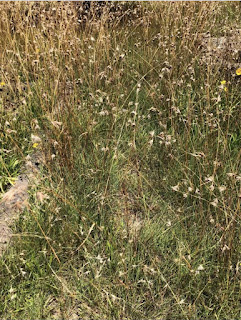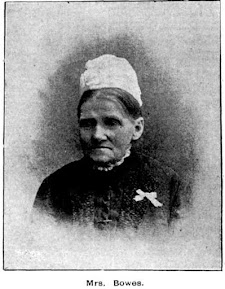A Man Between Two Worlds
In Australia we are celebrating National Reconciliation Week which we assign increasingly great social importance to. I prepare this weeks blog in Parramatta, Western Sydney, the land of the Burramattagal people of the Dharug nation. I acknowledge their traditions and culture and pay respect to their elders both past, present and emerging.
This week's blog honours the life of an indigenous individual and I wish to warn those who may be culturally affected that a photograph of this individual follows.
Since the early times of the establishment of the European colony in NSW, government agencies, explorers, surveyors and members of the general public have called upon the tracking abilities of Indigenous men and women.
The skills of trackers were drawn from bush and hunting knowledge held by Indigenous groups throughout NSW. A good tracker could pick up the smallest change in the landscape and quickly work out in which direction a person or animal was moving. The NSW Police Force actively engaged Indigenous trackers from 1850, attempting to secure Indigenous trackers for each of the Police districts.
Although trackers are no longer employed by the Police, the skills and knowledge are still retained by many Indigenous people throughout NSW.
WHYMAN WARRIGAL McLEAN
Photo of unmarked grave of Whyman Warrigal McLean taken in 2020
Whyman was born in Deniliquin, NSW - Wamba Wamba and Perrepa Perrepa country - about 1860. He was the son of Archibald McLean, a Scotsman and Louisa, an Indigenous woman. As a young man, Whyman learned a combination of traditional and pastoral industry skills.
In @ 1882 and just after he married Eliza Matthews, whilst living on the Aboriginal mission station at Maloga, he became an Aboriginal missionary. For many indigenous people it was not a simple matter to convert to Christianity but many saw parallels with their own beliefs.
McLean worked for many years as a missionary, travelling to Brisbane, Sydney and Melbourne and raising money for the Maloga Mission cause. By 1888 as resentment to the social and religious rules being imposed grew, many left, as did McLean (possibly due to Eliza'a death in February 1889). By the early 1890's he was living on the Warangesda Mission still practising Christianity. It was here that he married Mary (Maggie) Manns and soon after their daughter Florence was born in 1897, he became a tracker for the NSW Police based at Tumbarumba quite a distance away. Perhaps the prospect of a regular wage using his traditional skills during the time of a severe recession may have been the deciding factor. During his five years there he was often employed to find missing persons often discovered in creek beds as well as other investigations such as suspicious haystack fires.
The cold winters took their toll and McLean made application to the Aborigines Protection Board for a rail pass to take his family to a warmer area. He was refused. Whyman himself even suffered a bout of pluerisy spending some months in Wagga Wagga Hospital. It was during this time that his marriage deteriorated resulting in McLean, taking the unusual step for the time, of suing for divorce.
Whyman remained a tracker at Tumbarumba until May 1902 before transferring to Wagga Wagga even though there was no vacancy at the time. One of his first jobs was a common one, that of looking for a lost child in the bush. It ended in success and gave McLean the opportunity to display his prowess. He settled in the area and entered a defacto marriage with Rosie Freeman with his second son being born in 1903. One of the cases that gave him his greatest recognition was the robbery of copper plates from a mining battery near Gundagai in 1904. His evidence led to the conviction of Andrew Fogarty and he received a portion of the reward given by the owner of the battery.
Whyman McLean served 28 years at the Police Station in Wagga Wagga and worked on cases far and wide. During his time he was responsible for the recovery of 34 bodies of people who had drowned in the Murrumbidgee River. He was also instrumental in tracking and capturing up to 120 fugitives who were brought before the courts.
He briefly left the Force after illness and was given permission to occupy an Aboriginal reserve on the outskirts of Wanabadgery village consisting of 20 acres. For a few years he farmed the property but soon returned to his tracking position. In 1916 McLean married once more, this time to Elizabeth (Lizzie) Crozier. As he neared retirement McLean did less and less tracking work. His last reported case was the retrieval of a drowned man's body from the Murrumbidgee River in February 1918. McLean's retirement was announced in February 1925 but he didn't hang up his boots until November 1926.
Ill health overcome him and after suffering what appeared to be a stroke McLean was taken to the Callan Park Hospital for the Insane in Sydney for treatment. Many Indigenous people were unwelcome in the mainstream healthcare system at the time and Callan Park was considered an appropriate place for him even though there was nothing to suggest he possessed an unsound mind.
Whyman Warrigal McLean died there on 23 December 1926 and was buried in the Church of England section of Rookwood. No family members were present at the burial service.
Even though there appears to be a sad end to Whyman's life, it was far from it. McLean was a man who managed to straddle both traditional culture but also embraced Christianity and life amongst people of mainly European backgrounds. His work and his word were good and held in high esteem but he was also a man of his times caught between two worlds.
His grave is one of the many unmarked ones in the area with only long grasses blowing in the breeze marking his spot. He is buried a long way from his country. RIP.
Photograph of Whyman Warrigal McLean from Ancestry.com
Many thanks to the contents of the book "Pathfinders" by Dr Michael Bennett; a fascinating but poignant read where I learnt that Whyman McLean is not the only Aboriginal tracker buried in Rookwood.
More in depth information about the life and times of indigenous trackers in NSW can be found at the following page:-
https://pathfindersnsw.org.au/about/
compiled by Dr Michael Bennett where you can obtain information on where to purchase a copy of his book I previously mentioned.
If you are unable to post a comment on this page please go to the facebook group, rookwoodcemeterydiscoveries and post your comment or question there





Comments
Post a Comment